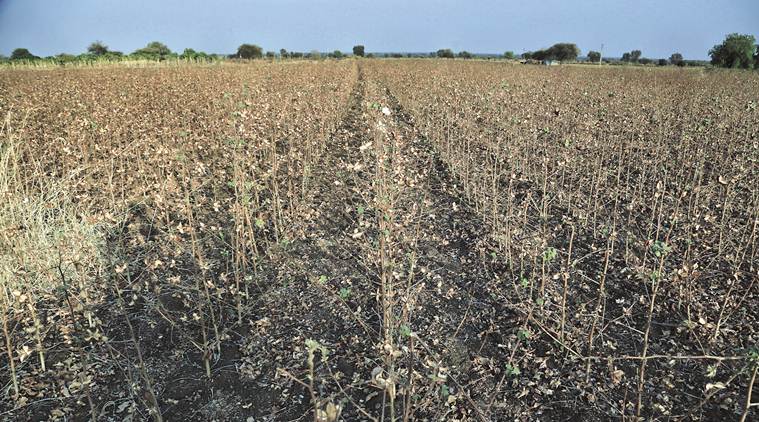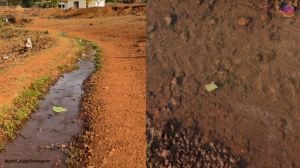- India
- International
Industry estimates not much rise in HTBt cotton plantation
Ram Kaundinya, director general of the Federation of Seed Industry of India (FSII), pointed out that the industry estimates say that around 15 per cent of the present cotton crop across the country is under the HTBt cotton.
 The issue of HTBt cotton had leaped back in the news when in June this year, the Shetkari Sanghtana had carried out its sowing in Akola in defiance of the ban. (File)
The issue of HTBt cotton had leaped back in the news when in June this year, the Shetkari Sanghtana had carried out its sowing in Akola in defiance of the ban. (File)
Notwithstanding the ongoing agitation about legalising the unauthorised Herbicide Tolerant (HT) hybrid of genetically modified Bt cotton, seed industry insiders feel there has not been a quantum jump in area under the unauthorised variant. Ram Kaundinya, director general of the Federation of Seed Industry of India (FSII), pointed out that the industry estimates say that around 15 per cent of the present cotton crop across the country is under the HTBt cotton.
Concerned with reports about farmers using the unauthorised variant, the Union government had formed a high-level committee to study the phenomenon. For 2017, the committee has talked about 15 per cent of the cotton area in Maharashtra, Andhra Pradesh,Telangana and Gujarat to come under HTBt cotton. Back then, the seed industry had estimated that around 30 lakh packets of such seeds were sold in the country. “The trend remained more or less the same last year also,” he said. On an average, the country records sale of 4-4.5 crore packets of cotton seed annually. Farmers generally use 2-2.5 packets (each weighing 400 gms) of cotton seed per acre of their fields.
The issue of HTBt cotton was back in the news when, in June this year, the Shetkari Sanghtana had carried out sowing in Akola in defiance of the ban. The farmers’ union had demanded the right to access to the technology, which they said would reduce their cost of production by substantially reducing the need of manual weeding. Since then, similar sowing has been undertaken in many other parts of Maharashtra, with farmers’ union in Haryana carrying out sowing of genetically modified seeds of brinjal also.
Kaundinya said the industry estimates this year too, around 30 lakh packets of HTBt cotton were used for sowing across Maharashtra, Andhra Pradesh, Gujarat and Telangana. “We feel the area under HTBt has not gone up much, although agitations by farmers have brought the issue in the open,” he said. Revenue officers say seeds of the unauthorised hybrid are produced mostly in Gujarat and Telangana and are allegedly smuggled into other states by the Gutkha mafia. Akola district authorities had filed an FIR against the organisers of the June event but the Bombay High Court had stayed action against the farmers.
Farmers prefer HTBt cotton given the tolerance of the crop towards the commonly used weedicide, glyphosate. Bt Cotton — the first and only genetically modified crop allowed in India — has seen the introduction of two alien genes of Cry1Ac and Cry1Ab harvested from the soil bacterium, Bacillus thuringenesis (thus the abbreviation Bt). The third generation of GM cotton has seen the addition of another gene — Cp4 EPSPS extracted from another soil bacterium, Agrobacterium tumefacien. This genetic modification allows application of glyphosate to control weeds.

Given the public defiance, Kaundinya felt the sale of unauthorised seeds could increase depending upon the price of the commodity next year. “We feel next year the sale of packets could rise to around 60 lakh packets. Such production is carried out illegally, but such sales affect the operations and revenue of companies is hit,” he said. Given the complexity of the problem, Kaundinya urged the government to solve the problem through dialogues with various stakeholders.
Click here to join Express Pune WhatsApp channel and get a curated list of our stories
Apr 26: Latest News
- 01
- 02
- 03
- 04
- 05








































